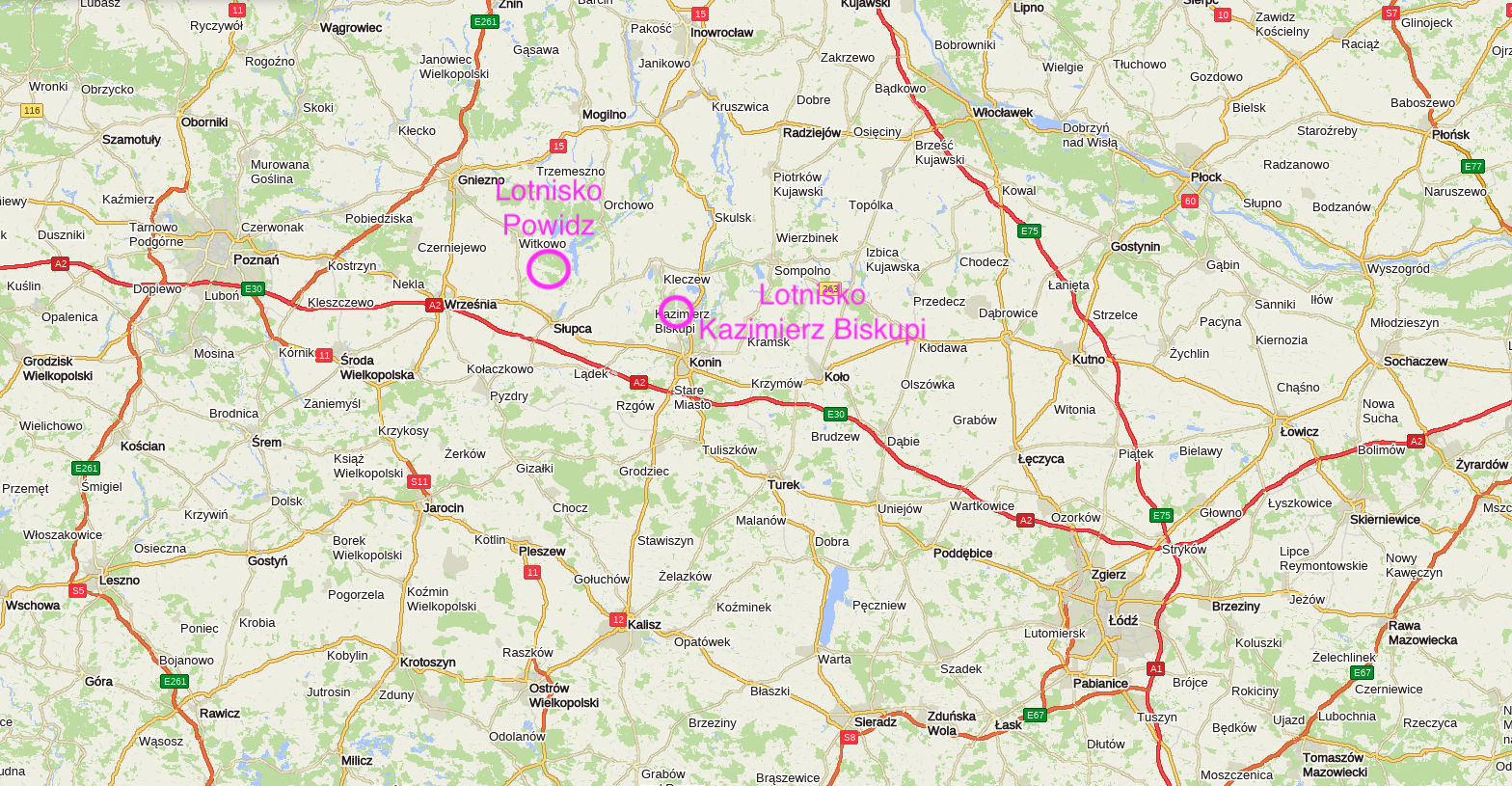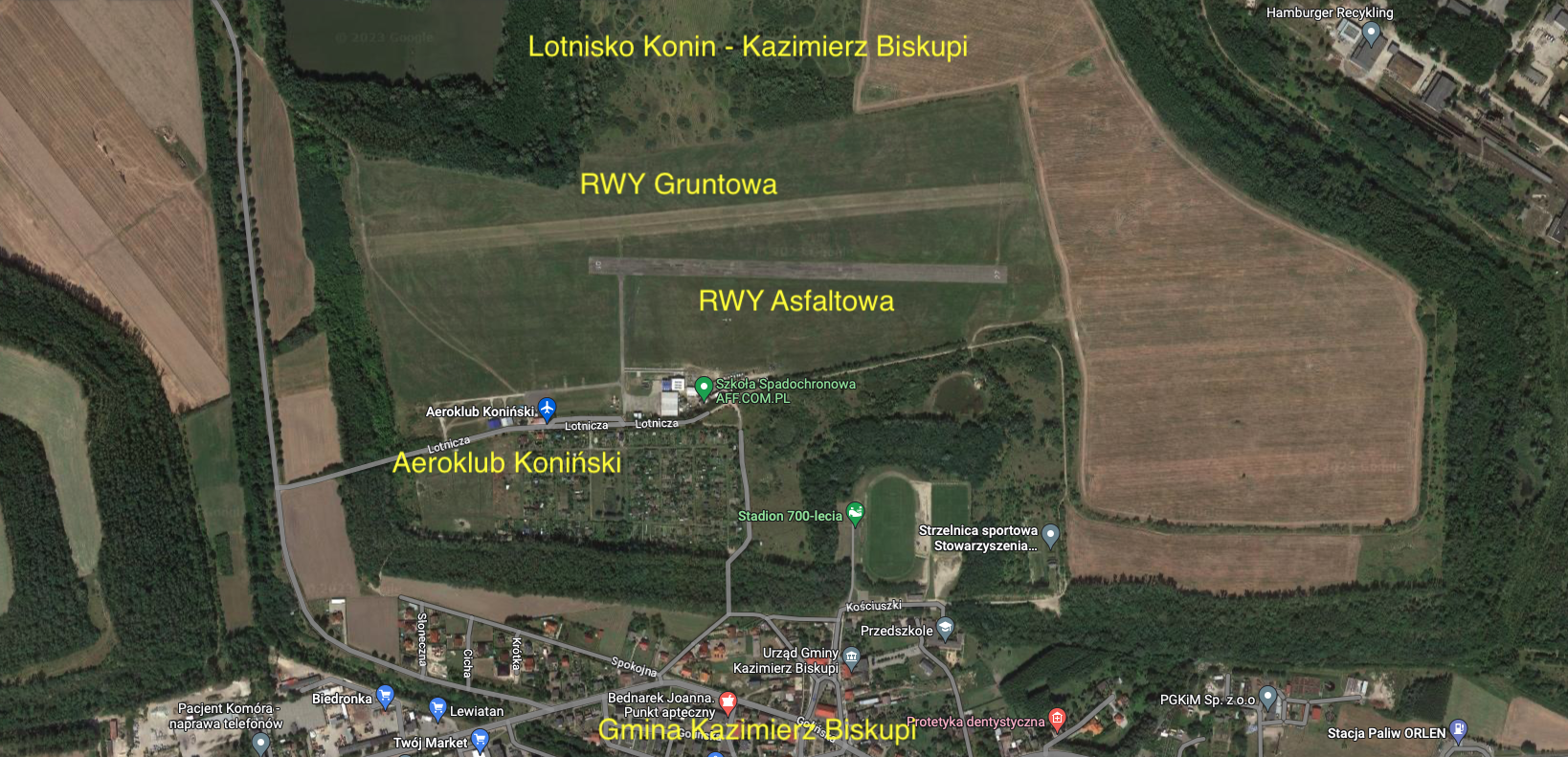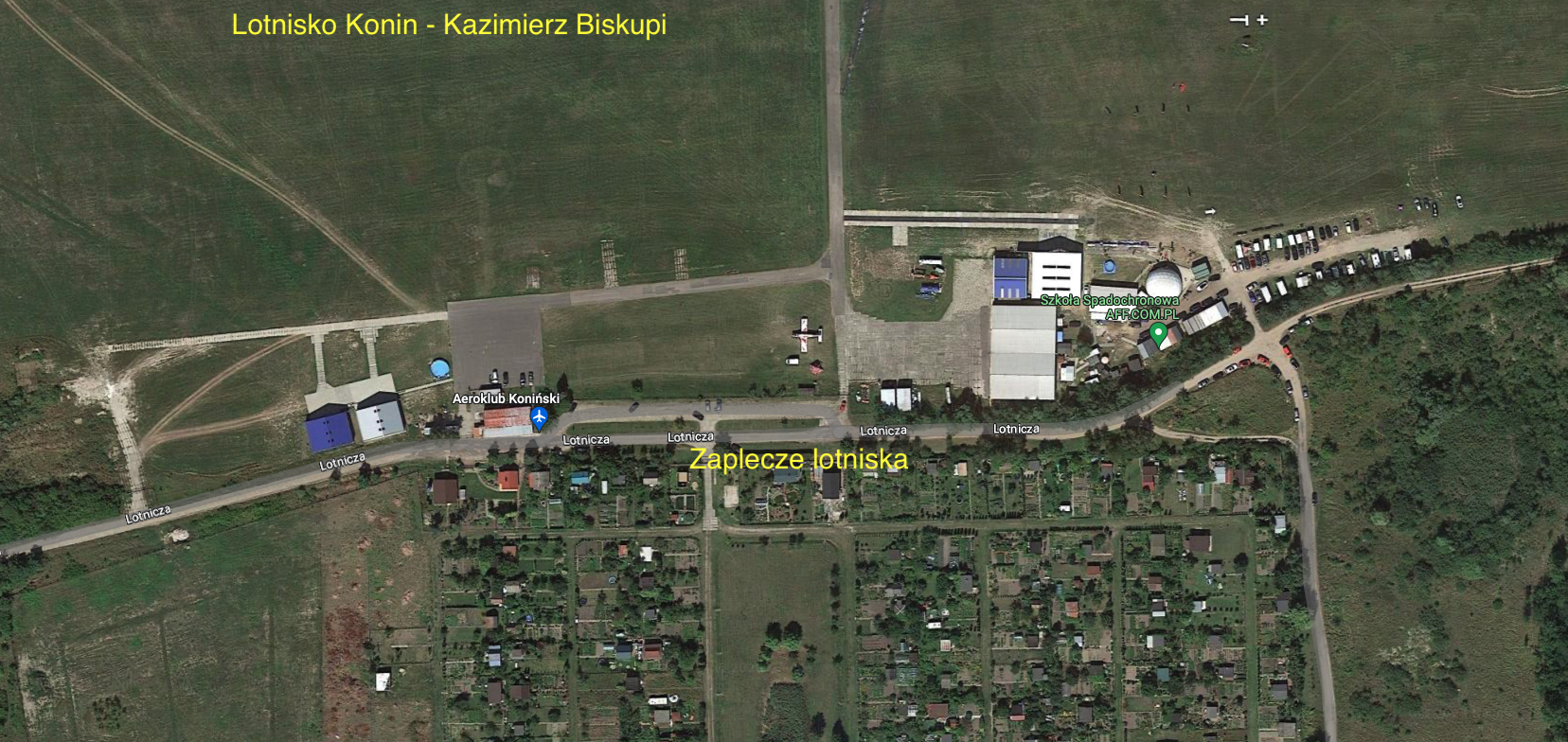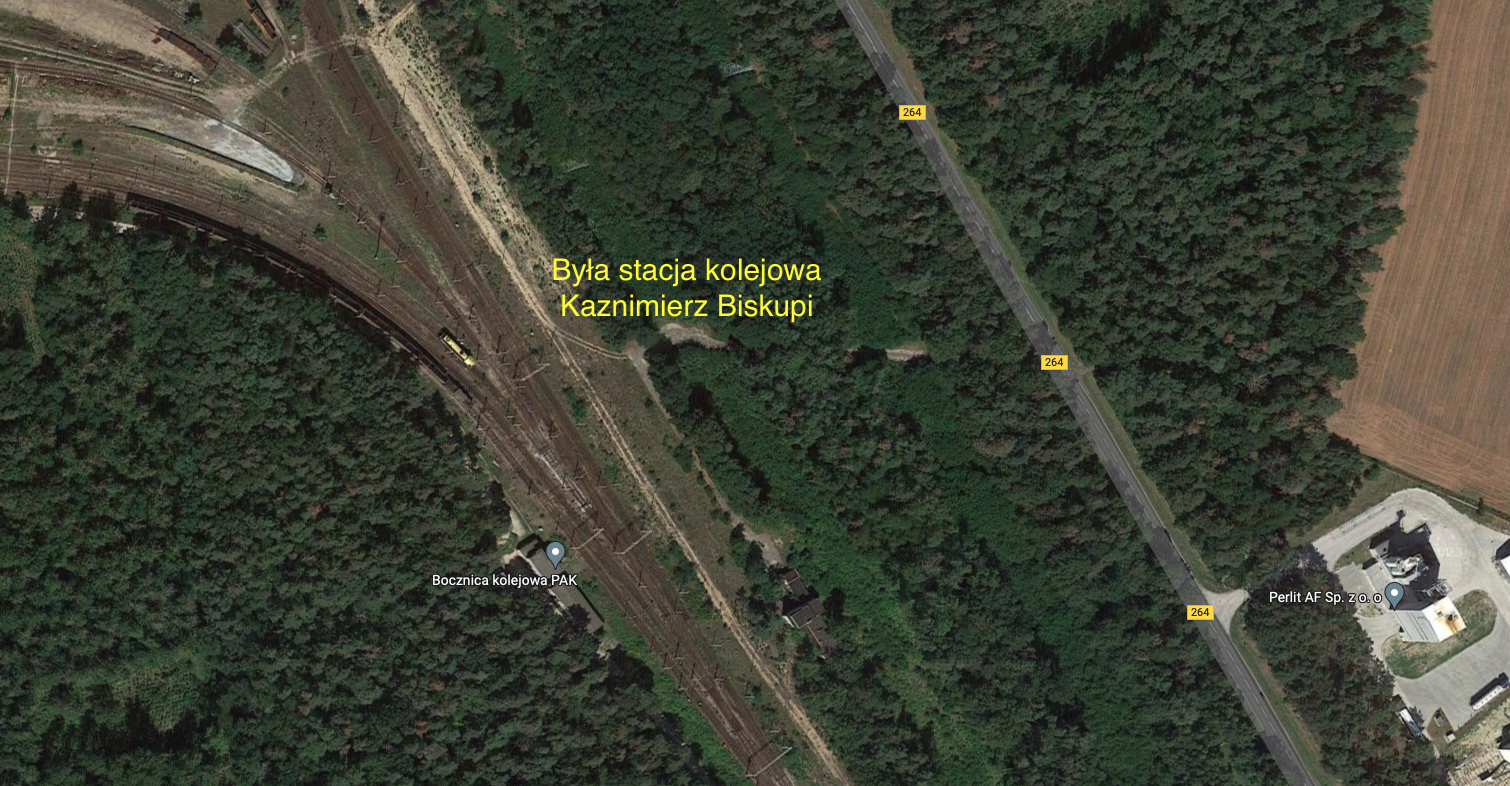Kazimierz Biskupi 20223-01-28
Airport in Kazimierz Biskupi near Konin.
Geographic coordinates: 52.319N 18.167E.
Kazimierz Biskupi.
Kazimierz Biskupi is a town located in the Greater Poland Voivodeship, Konin district. The distance to Konin is 13 km, to Poznań is 91 km, to Gniezno is 55 km, to Łódź is 120 km, to Warsaw is 212 km. Once Kazimierz Biskupi had city rights, which he received in 1287. The city received the market right and the right of Christmas markets. Kazimierz Odnowiciel is considered to be the founder of the village. In the 13th century, the town belonged to the Lubusz bishopric. The village functioned thanks to agriculture. In the 14th century, 15 villages belonged to the town. There was a large estate here. The village became famous in the Middle Ages as a place of worship of the Five Martyr Brothers. The distance from the Lubuskie estate meant that the town was sold to nobles in the 16th century. During the Swedish wars (1655-1660, 1701-1721) Kazimierz Biskupi was on the route of marching armies, which caused great damage. The city was plagued by fires and plagues. In the 16th and 17th centuries, craftsmanship was of great importance in the economic life of Kazimierz Biskupi: textile and clothing, leather, food and processing, woodworking and agriculture, which was always dominant. In 1793, after the Second Partition of Poland, Kazimierz Biskupi found itself under Prussian rule. In the years 1807-1815, it belonged to the Duchy of Warsaw, and from 1815, it was under the Russian rule. In the period 1794 – 1864, Kazimierz Biskupi was a private noble town. It was the center of large landed estates belonging to various families. City rights were revoked in 1870 by the tsar. However, the right of markets and fairs was left. It was headed by the mayor and the commune council. In the interwar period, agriculture and crafts continued to develop. In 1925, there were 10 colonial shops, 6 bakeries, 4 butchers. The commune was never rich, and one of the reasons was its remoteness from the main trade routes. The buildings were mainly wooden and made of clay and straw. During the German occupation (1939 – 1945), the Germans murdered at least 8,000 people, mostly Poles and Jews, in the nearby forests. In 2010, the population was 4,419 people.
The post-war development of Kazimierz Biskupi and the entire commune is mainly due to the Konin Brown Coal Mine. In the 1950s, large deposits of lignite were discovered near the village and its surroundings. In 1962, the construction of the “Kazimierz” lignite open pit was started. The open pit occupied the northern part of the village. The first coal was mined in 1964. Coal mining from this open pit lasted for 47 years (1964 – 2011). Currently (2023) he discovers that this one no longer exists.
Konin Airport – Kazimierz Biskupi.
Geographic coordinates: 52.319N 18.167E. Elevation 110 m (362 ft).
The airport is located 14 km from Konin, to the north. To the west of the Konin – Kazimierz Biskupi airport, 25 km away, there is the 33rd Transport Aviation Base in Powidz.
The airport was opened in 1986 as a civil – sports airport. The airport has the ICAO code – EPKB. The owner of the airport is the Konin Aeroclub. The field of ascents was created on the reclaimed heap of the Konin Brown Coal Mine. The access to the airport is via Lotnicza Street, the surface of which is lined with trylinka. The street rises sharply to the top of the former heap. The airport area is fenced and has several gates. From the south, the airport is bordered by a housing estate of single-family houses.
The flying club runs sections for airplanes, gliders, parachutes, modeling and ballooning. There are also sightseeing flights, by plane or glider. In 2014, in Kazimierz Biskupi, an association supporting parachute sport was founded – Parachute Sports Club Sky Camp. Parachute courses, group jumps, high-altitude jumps, tandem tourist jumps are organized.
The airport has a hard RWY with an asphalt surface, measuring 640 m x 27 m, which is located in the direction 091/271 (09/27). There is also a second RWY, with a ground surface (grass) 1,020 m x 35 m, located in the direction 085/265.Address: ul. Lotnicza 14, 62-530 Kazimierz Biskupi. Radio: Kazimierz-Radio 122.380 MHz. Phone: +48 63 241 13 79.
Kazimierz Biskupi railway station.
Geographic coordinates: 52.318N 18.193E.
In the 1920s, Kazimierz Biskupi gained a railway connection with Konin. At that time, a local narrow-gauge railway was built. Konin received a call from Anastazew and Sompolno. The lines were built to serve agriculture, especially the Gosławice Sugar Plant. The railway line reached Gosławice in 1912. During the Great World War, the Prussians built more branches. One of these lines, Konin – Czarków, functioned until 1965, when it was dismantled for the lignite opencast (Kazimierz Południe opencast). The first narrow-gauge railway train on the Konin – Kazimierz Biskupi route passed on December 22, 1925.
When large lignite mines and large power plants were built, the state faced the problem of transporting workers. Bus transport provided by workplaces was insufficient. I had to take the railroad.
The Kazimierz Biskupi railway station was opened in 1974 and closed in 1996. The station had one island platform with two edges. Currently, the station is a railway siding of ZE PKA (Zespół Elektrowni Pątnów – Adamów – Konin). In 1971, Platform 3 was built at the Konin railway station. The platform was located to the north of the station level, i.e. far from the station. A tunnel under the tracks and platforms for travelers has been extended to Platform 3. The locomotive depot was expanded to meet the needs of increased traffic. The railway line No. 388 ran along the national road No. 25. On May 26, 1974, the first passenger trains to Kazimierz Biskupi started from the Konin station.
The establishment of the station was related to the railway line No. 388. The line is of industrial importance and is operated by the ZE PAK mine and power plant (Zespół Elektrowni "Pątnów-Adamów-Konin") ZE PAK is a complex of three lignite- and biomass-fired thermal power plants in the Konin Basin Lignite, providing 1,168 MW of power. The coal-fired power plants included in the company were built in the period 1958 – 1974. The Konin power plant was launched in the 1950s. The Adamów power plant was launched in 1964. The first block in the Pątnów I Power Plant was launched in 1967. The Pątnów II power plant was commissioned in 2008. In 1970, the Pątnów, Adamów and Konin power plants were organizationally merged into the Pątnów-Adamów-Konin Power Plant Complex, and in December 1994, the ZE PAK State Enterprise was transformed into a joint-stock company wholly owned by the State Treasury. In the period 1995 – 1999, restructuring and privatization were carried out, and in 1999, Elektrim SA became the strategic investor of ZE "PAK" SA. As a result of restructuring in 1999, seven subsidiaries were separated.
The railway line No. 388 connected the city of Konin with individual thermal power plants in the Brown Coal Basin and ended at the Kazimierz Biskupi station. The length of the railway route No. 388 was 14.226 km. The rope was built in the period 1971 – 1974. In 1974, it was officially opened. Freight and passenger trains were launched for residents of the area and employees of power plants and mines. Passenger traffic was suspended in 1996. Stations and stops on route No. 388: Konin – Konin Niesłusz – Konin Marantow – Maliniec – Konin Power Plant – Gosławice – Pątnów – Pątnów Power Plant – Kazimierz Biskupski. Line No. 388 starts in the eastern head of Konin station and turns left from railway line No. 3 towards the north. It runs parallel to Torowa Street. It crosses Ignacego Paderewskiego Street into a horizontal carriageway. Then it runs parallel to the National Road No. 25 and the heating pipeline. It crosses Gajowa Street and another block. In the vicinity of Turquoise Lake and Brunatna Street, there used to be a Maliniec railway station. A parallel route of industrial railways begins near the Konin power plant. Here is a block of Ksiądz Dominika Jędrzejewskiego Street. The industrial railway is located on an embankment, in route No. 388 at the road level (DK No. 25). It is similar in the block of Gosławicka Street. There is a railway junction on the isthmuses of Lake Pątnowskie and Lake Gosławskie. Behind the isthmus, the tracks of both railways turn to the west. After passing the Pątnów Power Plant and turning north-west and passing the provincial road No. 264, there is the ZE PKA siding, where the Kazimierz Biskupski railway station used to be. It is about 1,800 m from the station to Kazimierz Biskupski, and another 600 m to the airport.
It was planned to electrify Line No. 388 in the period 1996 – 2000. However, due to its closure for passenger traffic, the plans were not implemented. Also, the line was not extended further north, through Klechów to Orchowo, where it would connect with the route to Inowrocław.
Currently (2023) line No. 388 is 9.213 km long, single-track and non-electrified. Until 1996, the line was 14.226 km long and led to Kazimierz Biskupi. In mid-1974, the first scheduled passenger train left the line, and passenger traffic continued until May 1996. Since then, there has been only occasional freight traffic on the line. The line was intended to connect the industrial districts of Konin with the city center. In 2013, the route was deleted from the list of PKP PLK railway lines and transformed into a Konin-Pątnów siding route, track 1P.
Interestingly, traffic on line No. 388 was limited. There was no rail traffic at night from 22:00 to 06:00 and on Sundays and holidays. In 1974, 12 pairs of trains ran. The largest number of trains ran in 1985, as many as 14 pairs. There were also shortened relations Konin – Maliniec. In 1996, there were only 2 pairs of trains, and there were also cancellations. The journey time was about 30 minutes, although in the 90s it was even more than 45 minutes due to restrictions. Many people then switched to their own cars or buses.
KWB Konin and KWB Adamów Mining Railways.
Koleje Górnicze KWB Konin are industrial railways that serve lignite mines and thermal power plants. Apart from the Mining Railway, KWB Adamów is a special case of the railway network in Poland. It was similar with the Sand Railway in Upper Silesia. The length of the KWB Konin line is 120 km. Normal track gauge, 1,435 mm. The lines are electrified. The voltage in the traction network is unusual in Poland, 2,400 V DC. Trail speed up to 60 km/h. The KWB Adamów Mining Railway is 30 km long and has similar features as KWB Konin.
Koleje Górnicze KWB Konin was established at the end of the 1950s. Initially, Koleje Górnicze KWB Konin was narrow-gauge (900 mm). In the 1960s, the spacing was changed to normal. Koleje Górnicze KWB Konin has a common point with the PKP railway (line No. 388) through the delivery and collection point at the Przesmyk-Gaj KWB station. The KWB Adamów Mining Railway has no connection with the PKP railway.
Mining Railway routes are mostly double-tracked. The coal train consists of an electric locomotive and 10 self-dumping wagons. On the trails of KWB Adamów there are trains of 8 wagons. Railway traffic on Koleje Górnicze is run on the basis of company regulations, approved by the decision of the Office of Rail Transport, and resulting from the railway regulations in force at PKP. Some trains moving as push trains. The first wagon is equipped with an industrial camera, a set of lights and a warning bell. The basic locomotive of Koleje Górnicze is the German LEW EL2 electric locomotive, called "Krokodyl", which in the 1960s replaced the narrow-gauge LEW EL3 locomotives (gauge 900 mm). The following diesel locomotives are used for shunting purposes: SM48, SM42, SM30, 401Da, SM04. Coal hoppers are VAP, 407V and 410V types. Due to the high humidity of lignite and the possibility of coal sticking to the wagons, coal wagons are heated.
The last coal train arrived at the Adamów Power Plant on December 30, 2017. In 2019, the liquidation of KWB Adamów railway lines began.
Written by Karol Placha Hetman




